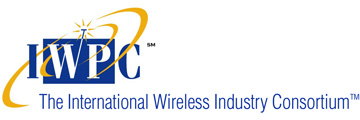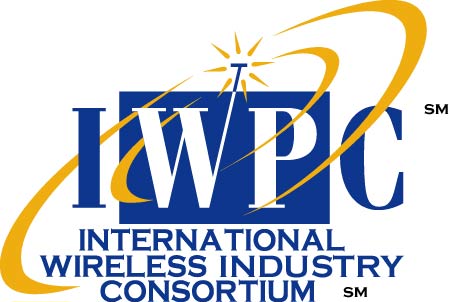LTE-A/PRO and 5G Advanced Smartphone & User
Equipment Architectures
Challenges and implications to support sub 6GHz 5G in mobile user equipment and consideration for mmWave integration
Hosted by:

When
March 13-15, 2017
Introduction
Considering what 5G means to the global user equipment ecosystem. What challenges does 5G need to address and what can realistically be expected, in terms of performance, battery life, etc.?
Workshop Goals
- Where are we today with performance wireless, landline, fiber
- Use cases, business requirements and where the status of industry is today
- What are the applications that are driving demand beyond todays 4G
- Where are we towards 1GBps – How do we get there and what will it do for us?
- Implications of UE and device architecture
- What can be achieved <6GHz
- What is a 5G smartphone?
Agenda
|
DAY 1 Monday
|
|
|
||||
| 7:00 PM |
Registration and Evening Reception |
Registration at hotel |
||||
|
DAY 2 Tuesday 7:00 AM
|
Breakfast and Registration continues |
Hotel
|
||||
|
8:00 AM |
Welcome and Introductions
|
|
||||
|
8:30 AM |
Host Keynote Opening Remarks and Presentation
|
Keynote Presentation
Director, Mobile Systems & Devices
|
||||
|
10:00 AM |
Networking Break |
|||||
10:40 AM |
Carrier Perspectives
|
Requirements and Expectations for 5G Devices
Project Manager
|
||||
|
11:20 AM |
Looking forward to 2019
|
Cracking the Lid off the first 5G Device
Product Planner
|
||||
|
12:00 Noon |
Networking Lunch |
|
||||
|
1:00 PM |
Chipset Perspectives
|
UE Design Challenges for NR eMBB
Senior Technical Account Manager
LTE for IoT Market and Technology Update: Advancements of 3GPP LTE-M and NB-IoT on the Road to 5G Massive IoT
VP Worldwide Marketing
|
||||
|
3:00 PM |
Networking Break |
|||||
|
3:40 PM |
Chipset Perspectives Continued |
MIPI Alliance Perspective - Mobile Device Interfaces towards 5G
Sr. Director, Technology
Managing Director
|
||||
|
4:20 PM |
Technology Enablers |
Testing of Beamforming Patterns and Tuned Filtering
Product Manager
|
||||
5:00 PM |
End of Day Panel |
|
||||
|
5:45 PM |
Adjourn for Day |
|
||||
|
7:00 PM |
Networking Dinner-
Lightfoot Restaurant |
Hosted by:
|
||||
|
DAY 3 Wednesday 7:00 AM
|
Networking Breakfast |
|||||
|
8:00 AM |
Technology Enablers
|
5GNR Front End: More Evolution Than Revolution
Director Systems Engineering
Considerations for 2 Gbps Capable RF Front End Architectures
Principal Technology Strategist
The Path to 5G Sub-6GHz Mobile Devices and Beyond
Director, Carrier Liaison & Standards
|
||||
|
10:00 AM |
Networking Break |
|||||
|
10:40 AM |
Technology Enablers, continued
|
Advancements in Bulk Acoustic Wave Filter Technology for 5G Mobile
VP, Business Development
Managing the Explosion of RF Filters Required for 5G Evolution Handsets
Director, Product Management
|
||||
|
12:00 Noon |
Networking Lunch |
|
||||
|
1:00 PM |
Technology Enablers, continued
|
High Performance Silicon Technologies for Radio Interface of sub 6GHz 5G Handsets
Director, Strategic Applications
Advanced GaAs PA Technology for LTE and 5G User Equipment and Infrastructure
Sr. Vice President
Looking Beyond Smartphones to IoT and CPE Devices
Director, Global Operator Relations
|
||||
|
3:00 PM |
Networking Break |
|||||
|
3:40 PM |
Test & Validation
|
Test & Measurement Aspects of Future UE Architectures
Technology Manager
|
||||
4:20 PM |
Closing Discussion |
Key take-aways, issues and actions, led by host |
||||
7:00 PM |
Evening Reception for 5G End-to-End Networks <6GHz Workshop |
At hotel |
FAQs
- What is the deadline for presentation/handout materials?
- What can I do to prepare for speaking an at IWPC workshop?
- Who are the attendees?
- What are the costs/registrations fees?
- Hotel information?
- What are the travel options from the airport to the hotel?
- Are there any audiovisual requirements?
- Will business cards be collected?
- What is the dress code?
- How will handout materials be provided?
- What is the deadline for
presentation/handout materials?
Deadline for electronic version of presentation/handout materials: Monday, March 6, 2017.
- What can I do to prepare for speaking an at IWPC workshop?
Click on the link below for a short video guide regarding preparing for and improving your IWPC presentation:
- Who are the attendees?
- We do not permit the Press.
- We do not permit Analysts.
- We do not permit Consultants.
- We do not permit 3rd party sales reps.
- We only permit "first hand knowledge experts" in business and technology issues, prepared to contribute to the discussion.
- What are the costs/registrations fees?
ALL Hosts, Speakers, Panel Members and Attendees will be asked to cover out-of-pocket workshop costs such as conference room costs, food (Social Reception plus First Day breakfast/lunch/dinner plus Second Day breakfast/lunch plus Breaks), audio/visual costs, etc.
These costs will be $837 (USD) per person. (For IWPC Members only.)
ALL Hosts, Speakers, Panel Members and Attendees will be asked to pay this fee in advance with either Visa, MasterCard, American Express, cash, personal check or business check. Make checks payable to IWPC.
- Hotel information?
Hilton Washington Dulles Airport
13869 Park Center Road
Herndon, VA 20171
Phone: 1-703-478-2900
Hotel WebsiteThe IWPC room block rate is $159.00.
The cut-off date for reservations is Thursday, March 2, 2017. After that date, rooms cannot be guaranteed at the IWPC rate. You can make your reservations on-line at:
http://www.hilton.com/en/hi/groups/personalized/I/IADAHHF-IWPC-20170313/index.jhtml?WT.mc_id=POG
- What are the travel options from the airport to the hotel?
Directions and transportation options will be posted as soon as possible.
- Are there any audiovisual requirements?
A Computer Projector will be available for the speakers.
In addition, we audiotape all presentations and the interactive discussions. Post workshop, presentations are made available to IWPC Members on the IWPC WEB site, along with “recordings” of all presentations and panel sessions.
- Will business cards be collected?
Business cards will be collected at the door from all attendees. We will make copies of these cards, which will be available to all who provided a business card.
- What is the dress code?
Business casual suggested. No ties, please!
- How will handout materials be provided?
For ALL IWPC members:
All IWPC members are invited to submit materials to be included in the online workshop folder in the IWPC Research Library. This should NOT BE SALES MATERIALS. Rather, we suggest it contain technical information about your technology as it relates to the workshop topics.
For all companies who will be making a presentation at the Workshop:
You are invited to submit an advance copy of your presentation, complete with graphics and illustrations.
These materials will be included on the IWPC website Research Library.
Please submit these materials either by email, as a Word for Windows file, Power Point files or PDF files.
- Go to www.iwpc.org
- Click on IWPC Activities Tab
- Under Workshops: 5G Smartphone Architectures
- Click on Submit Presentation Proposal. Complete the form and attach your presentation.
- Once we receive your presentation we will send an email confirmation.
AS BACKUP, PLEASE BRING AN ELECTRONIC COPY USB STICK WITH YOU!







